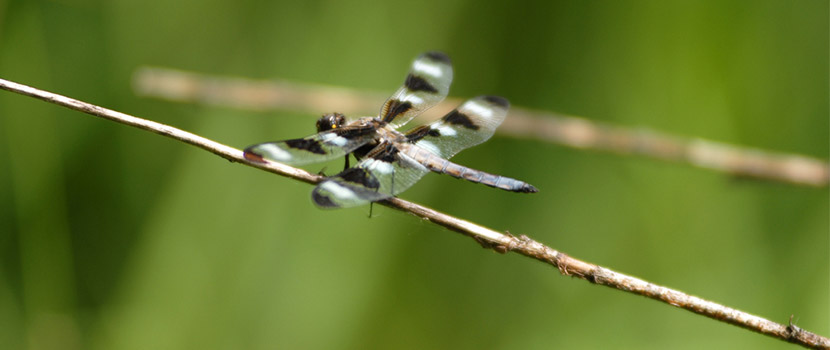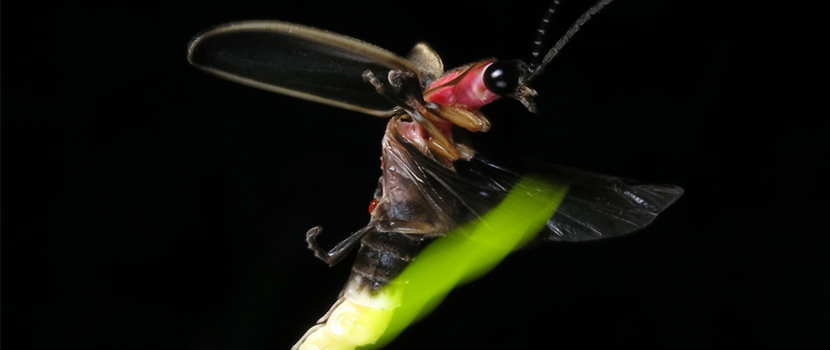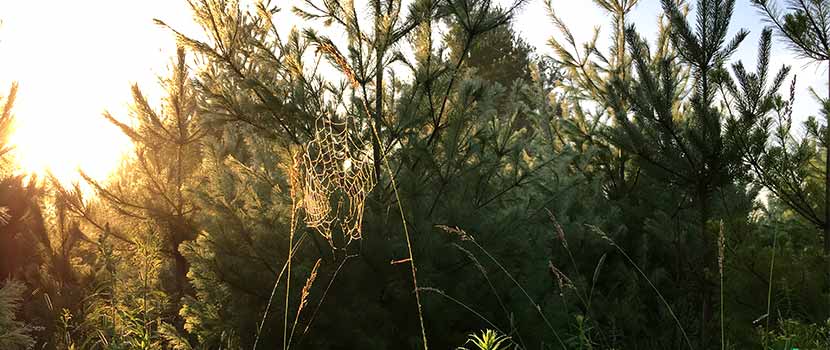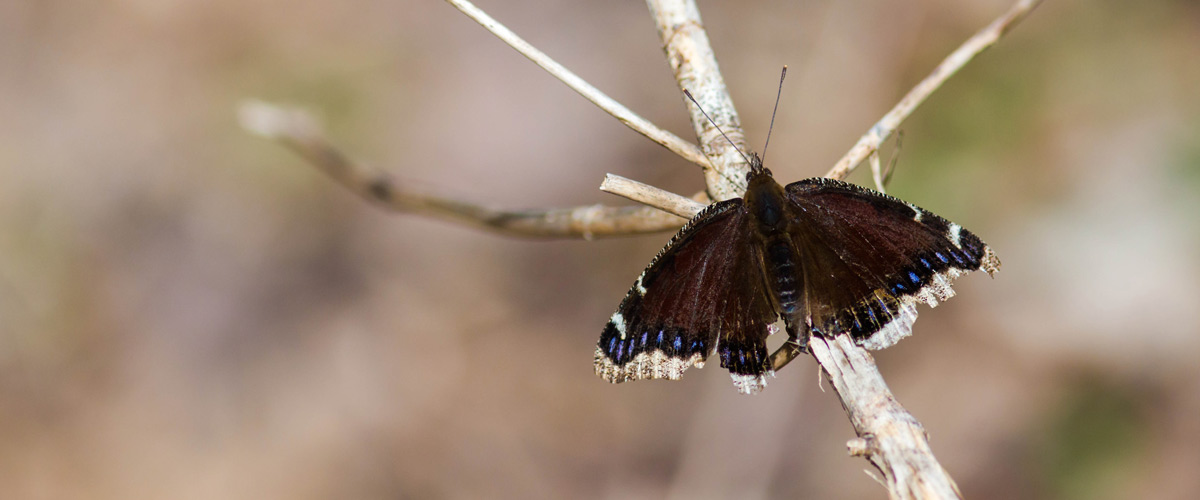
Human behavior can be very interesting to observe when it comes to the changing of seasons. Some of us avoid the cold completely by moving south for the winter; others retreat to the indoors to hide away in the warmth of their home. Here in Minnesota, seeing individuals face the cold while still wearing sandals and a t-shirt, claiming their love and embrace of the bold north, is also a likely scenario.
Our human strategies for surviving winter are not that different from the wildlife in our parks.
One segment of the wildlife population that is often overlooked when it comes to winter is insects. During the summer months, insects are everywhere – buzzing in our ears, pollinating flowers and providing itchy bites. As winter settles in, however, we stop seeing and hearing them.
You may be surprised to learn that even though you do not hear or see them, insects do stick around and survive through the snow and bitter cold temperatures.
Succumbing to Winter
Let’s get the bad news out of the way, well at least for those beneficial insects we enjoy: Some insects simply die when the cold hits. (This is good news for those invasive pests that can cause damage.)
Invasive insects like the emerald ash borer spend winter under the bark of ash trees as larva. These beetles are not native to Minnesota, so they are not adapted to the cold weather. But it must get very cold – down to around -20 or -30 degrees Fahrenheit – to start seeing significant mortality. That’s some good news to cheer for when it gets bitter cold!
Common plant pests like whiteflies and corn earworms die as winter settles in, but some that survive further south will migrate or even survive indoors to later disperse back in our area as temperatures warm back up.
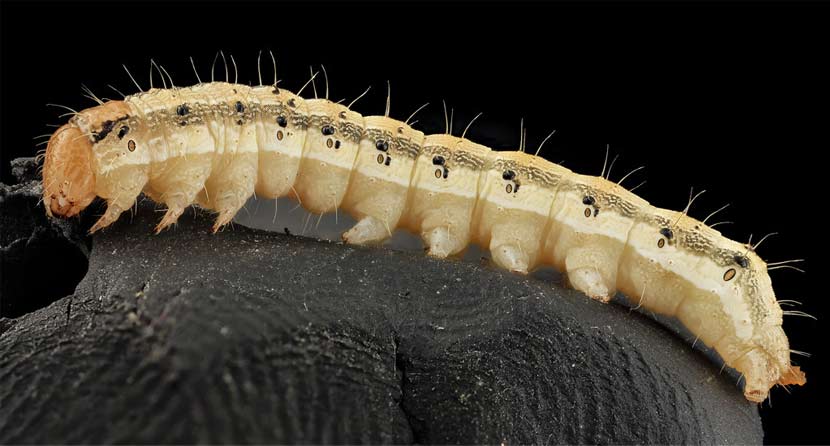
Other adult insects perish after living a short life in warm temperatures. This is where these survival strategies can get tricky because there are more than just a few. Insects are tenacious in finding ways to keep their populations going.
As mentioned with emerald ash borers, it takes drastic subzero temperatures consistently to see insect mortality. Like many insects, overwintering emerald ash borer larvae can survive subzero temperatures. How do they do that?
Insects that survive the winter have three main overwintering strategies: migration, freeze avoidance and freeze tolerance. In this post, we will focus on insects in Minnesota that utilize these winter survival strategies.
Migration
Migration is the seasonal movement of animals from one region to another. This is the most well-known strategy for insects, such as with the monarch butterfly. (Check out our past blog post and The Wandering Naturalist podcast to learn more on this mighty migration.) Getting out of Dodge before freezing temperatures arrive is a popular choice among humans, but it's not widely used by insects.
Did you also know that in Minnesota we have a few species of dragonflies that also migrate in the fall? Yes, butterflies are not the only ones heading south for warmer weather. The common green darner can travel as far as 900 miles on its two-inch wings, flying from Minnesota to the Gulf of Mexico. They are some of the most abundant dragonflies in North America, but few people notice this mass migration.
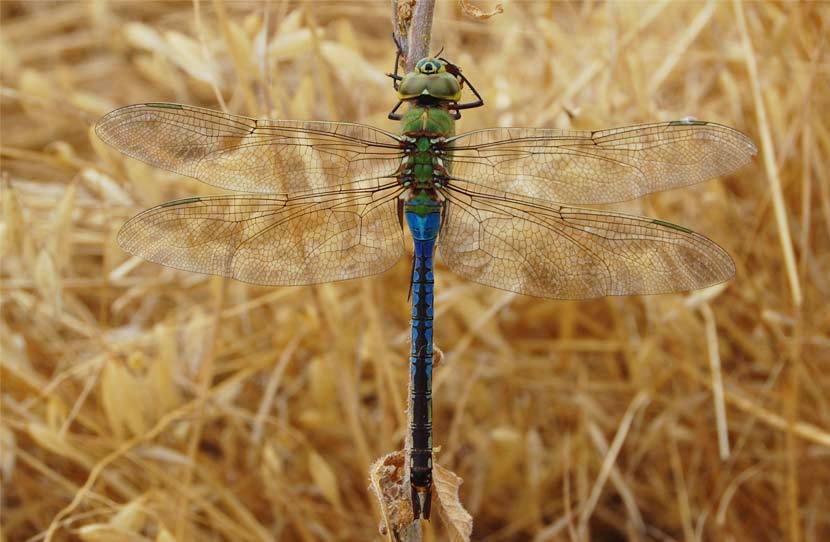
Even more perplexing is that not all common green darners migrate. As we discussed in a previous blog post, dragonflies not only use migration to survive winter, but their young – as nymphs – also live out the winter below the ice of lakes and ponds. They feed actively and grow all winter to emerge as adults when it warms up. The same goes for mayflies and stoneflies. Even if the adult insect's life is short-lived and restricted to warmer temperatures, they ensure their future generations survive.
Migration can be a lot of work and distance to travel, and most insects are not able to do it. That brings us to the insects that stay in Minnesota and utilize freeze avoidance and freeze tolerance.
Freeze Avoidance and Freeze Tolerance
For insects that don’t migrate, surviving colder temperatures generally falls under two categories: freeze tolerance and freeze avoidance.
Freeze-tolerant insects can tolerate the formation of ice in their bodies, while freeze-avoidant insects avoid freezing by keeping their bodily fluids liquid. Here in Minnesota where cold temperatures are expected seasonally and usually last for long periods of time, the main strategy is freeze avoidance.
Freeze avoidance can be achieved through both physiological and biochemical mechanisms. One method of freeze avoidance is selecting a dry hibernation site.
For example, take the mourning cloak butterfly, which we see in early spring. The adult butterfly overwinters in tree crevices and produces a sugar called glycerol in its blood that allows it to survive colder temperatures. On sunny days, even with snow on the ground, some adults will emerge to feed on tree sap and then return to their sheltered winter hiding place.
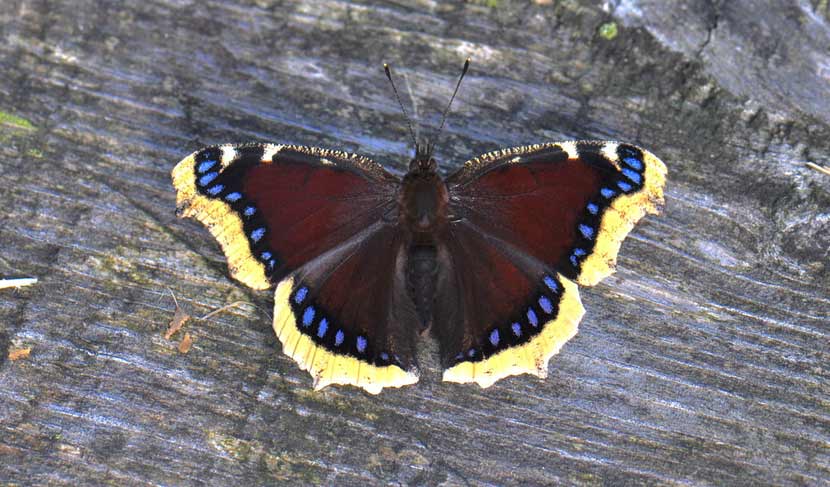
In most animals, freezing causes severe tissue damage that can result in death. Freeze-tolerant species have the ability to survive ice formation within their tissues.
These insects don’t mess around with producing sugar antifreezes like the mourning cloak butterfly. They freeze solid and “tolerate” it because they froze solid on their terms and did it gently.
An example of a freeze-tolerant insect is the woolly bear caterpillar. This fuzzy reddish-brown creature is found in many cold regions, including the Arctic. It literally freezes solid in its caterpillar form. It then thaws in the spring and later emerges as a moth. This ability to tolerate internal freezing is less common and often achieved through producing a cryoprotectant in its tissues.
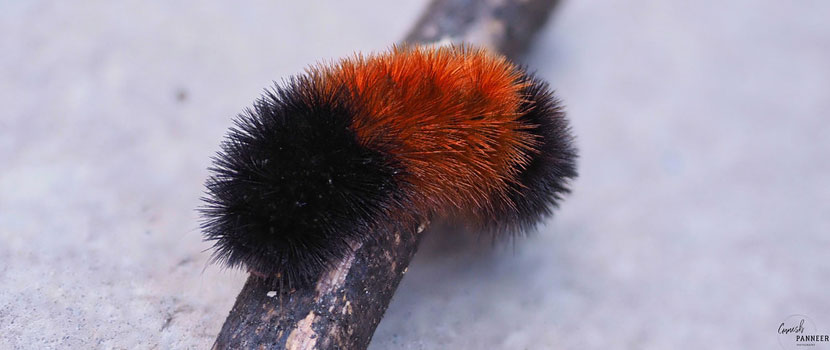
Insects have evolved to utilize a wide range and combination of techniques to survive our chilly winters. With these survival tactics happening at varying life stages – some below ground or above ground – it can get complicated quickly. And again, not all survive the winter as they have different thresholds of lethal temperatures.
When you step out this winter and feel the cold air on your face, think about the hidden overwintering insects. How do you relate in your own winter adaptions?
Banner image credit: "File:Mourning cloak (38559906050).jpg" by Melissa McMasters from Memphis, TN, United States is licensed under CC BY 2.0.
About the Author

Angela graduated from Minnesota State University—Mankato with degrees in ecology and geography. She has a passion for being outdoors and ensuring conservation of the natural heritage of our lands. As a wildlife biologist at Three Rivers Park District, she enjoys working on a wide range of projects from restoring prairies to pollinator surveys. Outside of work she can be found in the garden where she is in the good company of wonder dog, Sid, and two rented chickens, Cersi Henister and Princess Leialot.
Related Blog Posts
Fun Facts About Dragonflies
By: Angela Grill
Dragonflies are one of the most ancient insects and were one of the first species of winged insects to evolve. Learn more about their dual lives in the water and on land and the best places to find them in the parks.
Species Spotlight: The Magic of Fireflies
By: Miranda Jones
Fireflies evoke a sense of childlike wonder and delight. Learn what makes them glow, the threats to their population, and what you can do to protect them.
The Myths and Facts of Spiders
By: Monica Rauchwarter
Spiders are one of the most feared animals around, but they are important parts of their ecosystems. Learn all about these special creatures and find out the facts behind some of those myths that make them so scary.
